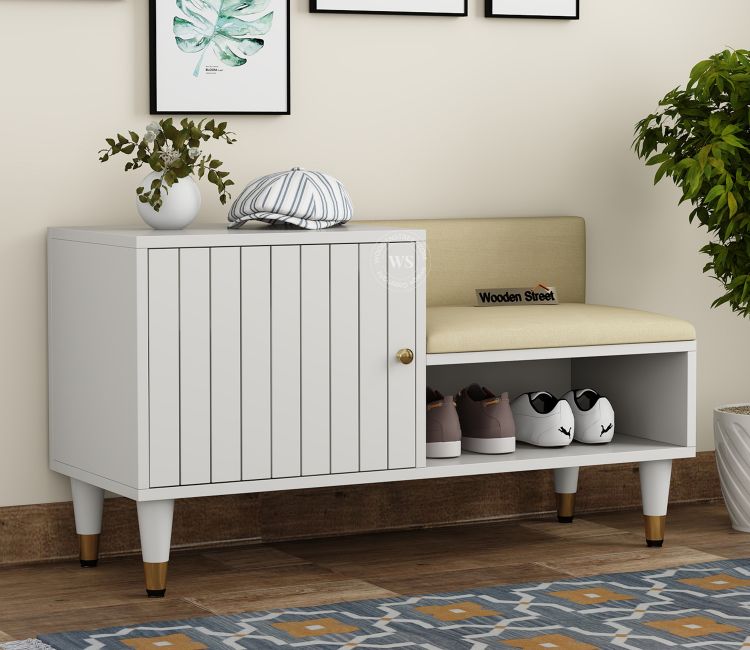Bookshelves are more than just functional pieces of furniture; they are silent witnesses to humanity's intellectual journey and artistic evolution. From humble beginnings to modern-day masterpieces, the bookshelf has transformed alongside our societies, reflecting changes in culture, technology, and design aesthetics. Let's explore this fascinating evolution and how contemporary brands like Wooden Street continue to redefine bookshelves for modern living.
The Ancient Roots of Book Storage
Before bookshelves as we know them existed, ancient civilizations stored their written works in scrolls, clay tablets, and manuscripts. The libraries of ancient Mesopotamia and Egypt, for instance, housed clay tablets on simple shelves or niches carved into walls. These early "bookshelves" prioritized functionality over form, offering rudimentary storage solutions for the earliest forms of recorded knowledge.
The Romans advanced this concept by developing armaria—wooden cabinets with doors—to store scrolls and codices. These armaria were often ornately decorated, reflecting the wealth and status of their owners. The emphasis on aesthetics began to emerge, setting the stage for bookshelves to become more than mere storage units.
Medieval Innovations: From Scriptoriums to Libraries
In medieval Europe, books were precious commodities, painstakingly handcrafted and often chained to desks to prevent theft. Monasteries and cathedrals, the intellectual hubs of the era, featured scriptoriums where books were stored on lecterns or in rudimentary shelving systems.
By the late Middle Ages, libraries in universities and royal courts adopted more organized storage systems, including wall-mounted shelves. These designs allowed for easier access and showcased books as symbols of knowledge and power. The growing demand for storage reflected the increasing accessibility of books, thanks to innovations like the printing press.
The Renaissance and Baroque Era: Elegance Meets Functionality
The Renaissance sparked a cultural revolution, and bookshelves evolved to reflect the era's artistic and intellectual vigor. Elaborately carved wooden shelves became popular in private libraries, often designed to complement the grandeur of the surrounding architecture.
During the Baroque period, bookshelves took on more elaborate forms, with intricate carvings, gilded accents, and ornamental motifs. These pieces served as both functional furniture and artistic statements, embodying the opulence of the age.
Industrial Revolution: Democratizing Knowledge and Design
The Industrial Revolution in the 18th and 19th centuries brought about mass production, making books more affordable and accessible. This democratization of knowledge necessitated practical storage solutions, leading to the proliferation of standardized bookshelves.
Bookshelves became simpler in design, prioritizing utility to cater to the growing middle class. At the same time, industrial techniques enabled the use of new materials like metal, expanding the possibilities for bookshelf construction.
The Modern Era: Minimalism and Customization
The 20th century saw a shift towards minimalism and functionality in furniture design. Scandinavian influences popularized clean lines and modular designs, making bookshelves versatile and space-efficient. Wall-mounted shelves, floating designs, and open shelving became hallmarks of modern interiors.
Today, brands like Wooden Street continue to innovate, offering a wide range of bookshelves that blend timeless craftsmanship with contemporary needs. From compact wall-mounted shelves for urban apartments to expansive wooden units for home libraries, Wooden Street caters to diverse tastes and spaces. Their use of high-quality materials and customizable options ensures that every bookshelf is as unique as its owner.
The Future of Bookshelves: Technology and Sustainability
As we move into an increasingly digital age, the role of bookshelves is evolving. While e-books and digital libraries have reduced the need for physical storage, bookshelves remain indispensable for their aesthetic and sentimental value. Moreover, the emphasis on sustainability has led to the rise of eco-friendly materials and designs.
Wooden Street, for example, champions sustainability by using responsibly sourced wood and promoting eco-conscious practices. Their designs not only celebrate the natural beauty of wood but also address modern concerns like space optimization and multifunctionality.
Conclusion
The journey of bookshelf through history mirrors humanity's quest for knowledge, beauty, and innovation. From ancient armaria to sleek modern designs, bookshelves have adapted to changing times while retaining their core purpose: to celebrate and preserve the written word. Brands like Wooden Street carry this legacy forward, offering designs that honor the past while embracing the future.








